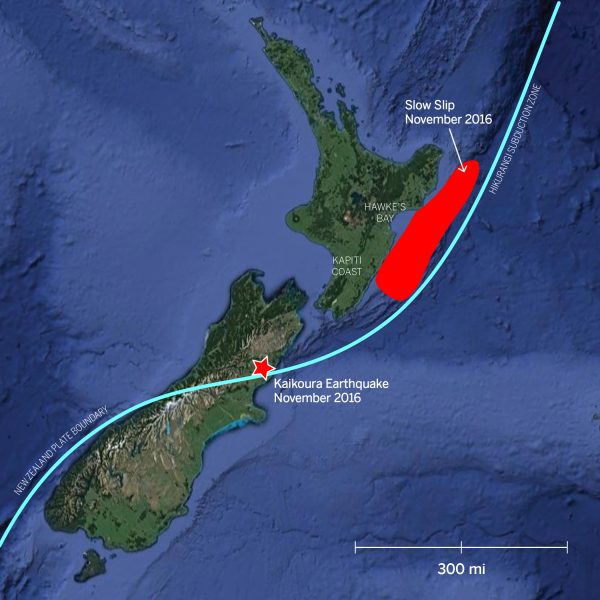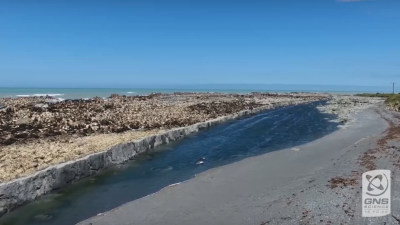Earthquake Triggers “Slow-Motion” Quakes in New Zealand
November 20, 2017

Slow slip events, a type of slow motion earthquake that occurs over days to weeks, are thought to be capable of triggering large, potentially damaging earthquakes. In a study led by the University of Texas Institute for Geophysics (UTIG), scientists have documented the first clear-cut instance of the reverse — a massive earthquake immediately triggering a series of large slow slip events, with some of the slow slip events occurring as far away as 300 miles from the earthquake’s epicenter.

The study of new linkages between the two types of seismic activity,
published in Nature Geoscience on Sept. 11, 2017, may help promote better understanding of earthquake hazards posed by subduction zones — areas where a tectonic plate subducts beneath an adjacent tectonic plate.
These types of faults are responsible for some of the world’s most powerful earthquakes.
“This is probably the clearest example worldwide of long distance, largescale slow slip triggering,” said lead author Laura Wallace, a UTIG research scientist. She also holds a joint position at GNS Science, a New Zealand research organization that studies natural
hazards and resources.

Co-authors include other GNS scientists, as well as scientists from Georgia Tech and the University of Missouri.
In November 2016, the second largest quake ever recorded in New Zealand — the 7.8 magnitude Kaikōura quake — hit the country’s South Island. A GPS network operated by GeoNet, a partnership between GNS Science and the New Zealand Earthquake Commission, detected slow slip events hundreds of miles away beneath the North Island.
The researchers have also found that the slow slip events triggered by the Kaikōura quake were the catalyst for other quakes offshore the North Island’s east coast, including a magnitude 6.0 just offshore from the town of Porangahau on Nov. 22, 2016.
Back to the Newsletter